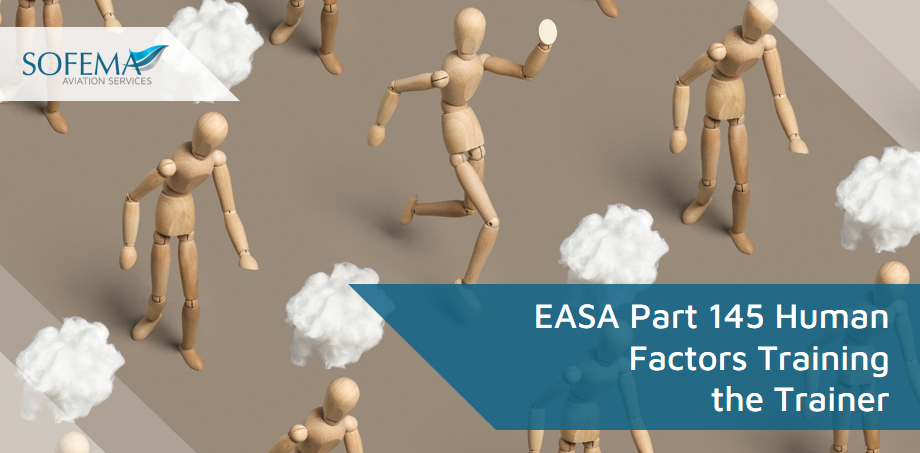Sofema Aviation Services (SAS) www.sassofia.com considers the best practices for creating a warm and friendly environment.
Introduction
Incorporating ice breakers, energizers, and warm-ups into EASA Part 145 Human Factors training sessions is a strategic approach to enhance the effectiveness of the training. By creating a warm, friendly, and engaging learning environment, these activities help break down barriers, reduce fears, and establish commonality among participants. Tailoring these activities to match the audience and integrating them thoughtfully throughout the session can improve learning.
- Icebreakers help participants feel more comfortable and open by breaking down initial barriers.
- Warm-ups engage participants right from the start, making them feel part of the group.
- Energizers keep the energy levels high, preventing the group from becoming passive or disengaged.
Dissipating Fear and Anxiety:
- Many participants may enter training sessions with apprehensions or fears about what to expect.
- These activities can alleviate such fears, making participants more receptive to learning.
Establishing Commonality:
- By engaging in shared activities, participants can find common ground, fostering a sense of camaraderie and teamwork.
- This commonality is crucial in creating an atmosphere conducive to open communication and collaboration.
Whichever way you use the icebreaker, it should be designed to be a fun and light-hearted activity to:
- get to know each other
- build trust and confidence
- encourage interpersonal communication
- create bonds
- break down barriers
- make the conversation flow
- reduce intimidation
- help people to relax
- allow the group to become more cohesive.
Selection and Implementation of Activities – Match the Audience:
It’s crucial to choose activities that are appropriate for the audience. Consider the participants’ backgrounds, experience levels, and cultural contexts.
For instance, a technical team may appreciate problem-solving games, while a more diverse group might benefit from activities focusing on personal introductions and team building.
Example – Types of Activities:
Ice Breakers:
- Name Games: Participants introduce themselves with an adjective that describes them (e.g., “Joyful John”).
- Two Truths and a Lie: Each participant shares three statements about themselves, one of which is false, and the group guesses the lie.
Energizers:
- Quick Stretches: Simple stretching exercises to invigorate the group.
Warm-Ups:
- Group Discussions: Start with a relevant question or scenario related to human factors, encouraging participants to share their thoughts.
- Brainstorming Sessions: Rapid ideation sessions on a specific topic to get minds working collaboratively.
Timing and Frequency:
- Start the session with an icebreaker to immediately create a friendly atmosphere.
- Use energizers periodically, especially after breaks or during long sessions, to maintain high energy levels.
- Warm-ups can be used to transition into more intensive parts of the training, aligning participants’ focus on the upcoming content.
Do’s and Don’ts of Ice Breakers
There are many ice breakers available in books and online, so you are spoilt for choice. However, the following do’s and don’t will help you choose the right kind of icebreakers for your event
Do
- choose the right icebreaker activity for the right group
- allow sufficient time for icebreaker activities
- use icebreakers to create a relaxed environment
- make the icebreaker and instructions simple
- monitor the participants
- be ready to improvise if necessary
- have a backup plan. In case the icebreaker isn’t working
Don’t
- introduce an icebreaker activity that will make others uncomfortable
- limit icebreakers to the beginning of a meeting or training event – use them to revitalize the group at any time
- force people to participate.
Facilitator’s Role:
- As an instructor, your enthusiasm and participation in these activities are crucial.
- Be attentive to the group’s dynamics and be ready to adapt activities as needed.
- Provide clear instructions and encourage everyone to participate, ensuring inclusivity.
Benefits in the Context of EASA Part 145 Training – Improved Learning Outcomes:
- When participants are relaxed and engaged, they are more likely to absorb and retain information.
- Interactive activities align well with adult learning principles, making the training more effective.
Enhanced Team Cohesion:
- Given the collaborative nature of aviation maintenance, these activities can significantly improve team dynamics.
- Better team cohesion leads to improved communication and collaboration, which is essential for safety and efficiency.
Increased Participation and Engagement:
- Active participation through these activities can lead to higher engagement levels throughout the training.
- Engaged participants are more likely to contribute to discussions and share their insights, enriching everyone’s learning experience.
Next Steps
Follow this link to our Library to find & download related documents for Free.
Sofema Aviation Services (www.sassofia.com) and Sofema Online (www.sofemaonline.com) provide Human Factors, Safety and Maintenance Event Decision Aid (MEDA) Training, together with Training for Trainers in the mentioned Courses. Delivered as Classroom, Webinar and Online courses – Please see our website or email team@sassofia.com
Tags:
SAS blogs, Training the Trainer, Energizers, icebreaker, Team Building, Sofema Aviation Services (SAS), learning environment, aviation human factor, Aircraft Maintenance Human Factors, Aircraft Maintenance, Aviation safety training, human factor, Human Factors Training, EASA Part 145, Aviation Training, aviation safety, Aviation Maintenance





